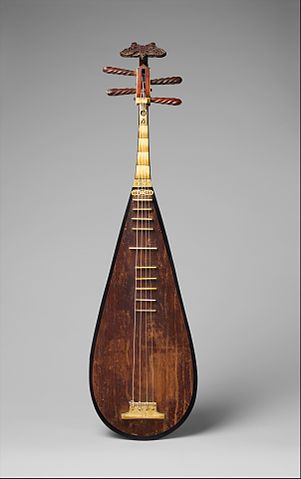Music
Chinese orchestras are composed of mainly bowed strings, woodwinds, plucked strings, and percussion. Typically, the vocal music is performed alone rather than chorally, and is sung with a weak, non-resonating voice or in falsetto. Traditional Chinese music is predominantly melodic rather than harmonic.

Guzheng
Guzheng is a Chinese plucked zither instrument. It consists of 16 or more strings and movable bridges, and the modern guzheng usually has 21 strings and bridges. Silk strings were originally used for the guzheng, but these have been replaced with metal strings or metal strings wrapped with nylon. One iconic sound is a tremolo produced by the right thumb rotating rapidly around the same note. Other guzheng techniques include harmonics where one plucks a string while tapping it at the same time, producing a note in a higher octave.
Pipa
The pipa is a four-stringed Chinese musical instrument, belonging to the plucked category of instruments. The instrument has a pear-shaped wooden body with a varying number of frets ranging from 12-26. The pipa is well-known for its expressive sound, featuring a high volume and a wide range of tones. The timbre can range from being vibrant and lively to quiet and tranquil. The high-pitch tone is very bright, its middle-range notes are quite gentle, and its low-range tone is mellow.